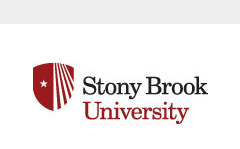Event Title
Document Type
Lesson Plan
Location
Charles B. Wang Center
Event Website
http://www.centerfornewsliteracy.org/globalconference2017/
Keywords
news literacy, journalism, media, news, advertising, native advertising, public relations, verification, independence, accountability
Start Date
8-14-2017 3:00 PM
End Date
8-14-2017 4:30 PM
Description
We are living in a world surrounded by media. Companies are constantly thinking of new ways of communicating and engaging with the public. When the reader is overwhelmed by advertisements in media, they are no longer persuasive to audiences who begin to disbelieve and question what the companies want to promote and sell. The technique of native advertising, which "employs a third party” such as media, social media, celebrities, professionals and people of high stature, has become an important tool that contributes positively to the success of a business. Sponsored articles and television shows are produced in the same way that traditional programs are, and they now account for a large portion of the company's budget and bring in huge revenue for media-based organizations. Consumers often find it difficult to identify a paid article because these articles are blended in with the surrounding environment which is so effective that many people are unable to distinguish between sponsored content and news reports. It has a large impact on the thoughts and actions of readers. Therefore, it is important to teach students the differences between native advertising and legitimate news articles. The lesson takes place in four hours, including four parts: What is native advertising; forms of native advertising; native advertising: beneficial or harmful; and identify native advertising. These sections are linked to concepts of news literacy, for example, evaluating sources, verification, independence, accountability and fairness. This lesson plan aims to guide readers and help them recognize subjective and non-independent articles. In order to convey these concepts, a teacher must use relevant and relatable examples within the daily lives of their students. Some of the more common techniques used by teachers are: game play, group work, and discussions or debates. These are applied to focus on student development and sharpening their skills to gain a better understanding of news literacy.
Included in
News or Native Advertising
Charles B. Wang Center
We are living in a world surrounded by media. Companies are constantly thinking of new ways of communicating and engaging with the public. When the reader is overwhelmed by advertisements in media, they are no longer persuasive to audiences who begin to disbelieve and question what the companies want to promote and sell. The technique of native advertising, which "employs a third party” such as media, social media, celebrities, professionals and people of high stature, has become an important tool that contributes positively to the success of a business. Sponsored articles and television shows are produced in the same way that traditional programs are, and they now account for a large portion of the company's budget and bring in huge revenue for media-based organizations. Consumers often find it difficult to identify a paid article because these articles are blended in with the surrounding environment which is so effective that many people are unable to distinguish between sponsored content and news reports. It has a large impact on the thoughts and actions of readers. Therefore, it is important to teach students the differences between native advertising and legitimate news articles. The lesson takes place in four hours, including four parts: What is native advertising; forms of native advertising; native advertising: beneficial or harmful; and identify native advertising. These sections are linked to concepts of news literacy, for example, evaluating sources, verification, independence, accountability and fairness. This lesson plan aims to guide readers and help them recognize subjective and non-independent articles. In order to convey these concepts, a teacher must use relevant and relatable examples within the daily lives of their students. Some of the more common techniques used by teachers are: game play, group work, and discussions or debates. These are applied to focus on student development and sharpening their skills to gain a better understanding of news literacy.
https://commons.library.stonybrook.edu/cnlglobalconference/cnl2017/one/12

